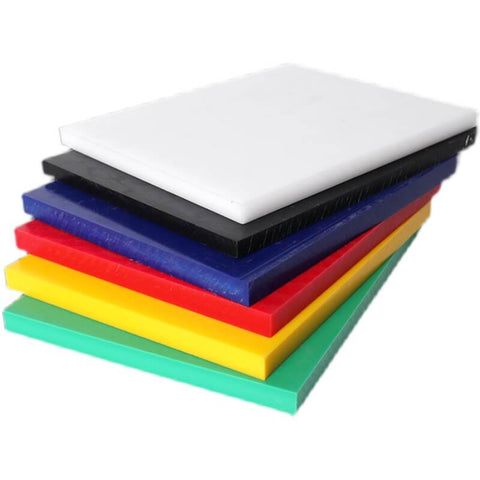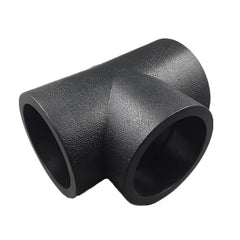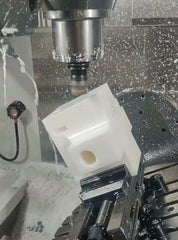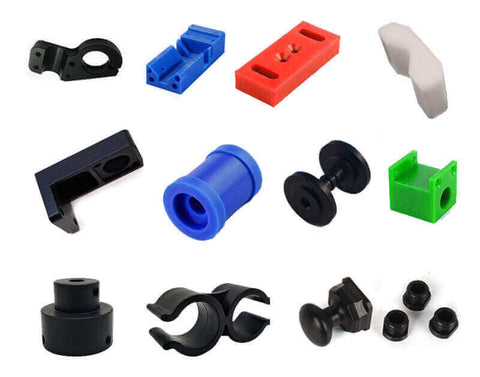Polyoxymethylene (POM) custom processing, also known as acetal, polyacetal, or polyformaldehyde, is a high-performance engineering thermoplastic that is widely used in various industries and applications. It has excellent properties such as high stiffness, low friction, good dimensional stability, and resistance to wear, fatigue, and chemicals. POM can be classified into two types: homopolymer and copolymer, which have slightly different characteristics and performance.
However, processing POM is not without challenges. POM is sensitive to heat and moisture, which can affect its quality and durability. It also has a tendency to shrink and warp during cooling, which can cause dimensional inaccuracies and defects. Therefore, choosing the right processing method and avoiding the common pitfalls of POM is crucial for achieving optimal results.
In this article, we will discuss the common processing methods and challenges of POM, and provide some tips and recommendations on how to process POM effectively and efficiently.

Processing Methods
POM can be processed by various methods, depending on the desired shape, size, and function of the final product. Some of the most common processing methods for POM are:
-
Injection molding: This is the most widely used method for producing POM parts with complex geometries and tight tolerances. Injection molding involves melting POM pellets and injecting them into a mold cavity under high pressure and temperature. The mold is then cooled and opened to release the part. Injection molding can produce high-quality parts with good surface finish and dimensional accuracy in large volumes and at low cost.

- Extrusion: This is a method for producing POM parts with continuous profiles, such as rods, tubes, sheets, films, etc. Extrusion involves melting POM pellets and forcing them through a die with a specific cross-section under high pressure and temperature. The extruded material is then cooled and cut into desired lengths. Extrusion can produce parts with uniform properties and good mechanical strength at high speed and low cost.
- Machining: This is a method for producing POM parts with precise dimensions and shapes by removing excess material from a raw material using cutting tools such as lathes, mills, drills, etc. Machining can produce parts with complex features and fine details that are difficult or impossible to achieve by other methods. Machining can also be used to modify or improve the surface finish or functionality of parts produced by other methods.
-
Other methods: There are also other methods for processing POM, such as thermoforming, blow molding, rotational molding, compression molding, etc. These methods are less common than the ones mentioned above but may have some advantages or applications in specific cases.

Processing Challenges
While POM is a versatile and durable material that can be processed by various methods, it also poses some challenges and difficulties that need to be addressed during processing. Some of the main challenges and difficulties of processing POM are:
- Thermal degradation: POM is prone to thermal degradation when exposed to high temperatures for prolonged periods of time. Thermal degradation can cause discoloration, odor emission, molecular weight reduction, loss of mechanical properties, and formation of formaldehyde gas which is toxic and flammable. Therefore, it is important to control the temperature during processing and avoid overheating or overcooking of POM.
- Moisture absorption: POM is sensitive to moisture absorption from the environment or during processing. Moisture absorption can cause swelling, hydrolysis degradation, loss of mechanical properties dimensional changes, surface defects, and poor adhesion. Therefore, it is important to dry POM before processing and store it in a dry place.
- Shrinkage and warpage: POM has a high coefficient of thermal expansion which means it expands when heated and contracts when cooled. This can cause shrinkage and warpage of POM parts during cooling after processing. Shrinkage and warpage can result in dimensional inaccuracies stress concentration and cracking of POM parts. Therefore, it is important to minimize the temperature difference between the mold and the part during cooling and use uniform cooling rates.
- Crystallization: POM has a high crystallization rate which means it solidifies quickly when cooled from the melt state. Crystallization can affect the morphology structure and properties of POM parts. Crystallization can also cause in-fibril voids or bubbles in melt-spun fibers which reduce their strength. Therefore it is important to control the cooling rate during processing and optimize the crystallization conditions.

Tips and Recommendations
To overcome the challenges and difficulties of processing POM here are some tips and recommendations that can help improve the quality and performance of POM parts:
- Use appropriate processing parameters such as temperature pressure speed time etc. according to the type and grade of POM and the processing method. Follow the manufacturer’s guidelines and recommendations for processing POM.
- Use proper mold design and material selection to avoid sticking warping or cracking of POM parts. Use mold release agents or coatings if necessary.
- Use proper die design and material selection to avoid die swell melt fracture or degradation of POM parts. Use lubricants or additives if necessary.
- Use proper cutting tools and techniques to avoid chipping cracking or melting of POM parts. Use coolants or lubricants if necessary.
- Use proper post-processing treatments such as annealing quenching tempering or coating to improve the dimensional stability mechanical strength or surface finish of POM parts.
- Use proper testing methods and equipment to evaluate the quality and performance of POM parts. Follow the industry standards and specifications for testing POM.
POM is a high-performance engineering thermoplastic that can be processed by various methods to produce parts with excellent properties and applications. However, processing POM also involves some challenges and difficulties that need to be addressed and overcome. By following the tips and recommendations provided in this article, you can process POM effectively and efficiently and achieve optimal results.
Among POM boards and rods, it is an interesting and creative material, and its special shape can be used in many parts items of various mechanical equipment. They have unique properties and benefits to add some sparkle and elegance to your mechanical equipment, storage shelving components or architectural accessories and more.
I hope this blog post has inspired you to try some of these ideas or come up with your own. If you do, please share your results with me in the comments below. I'd love to see where you utilize POM board/stick applications!
If you are interested in using POM boards/sticks for your projects or would like more information, feel free to harass us. We are a supplier specializing in custom processing and production of various plastic materials, with a professional engineer team and precision equipment, we are happy to be bothered by you and help you meet your needs. Do you need a free quote or help with any questions or materials?

Our website: www.beeplastic.com
Click to contact: Customized POM board/rod






